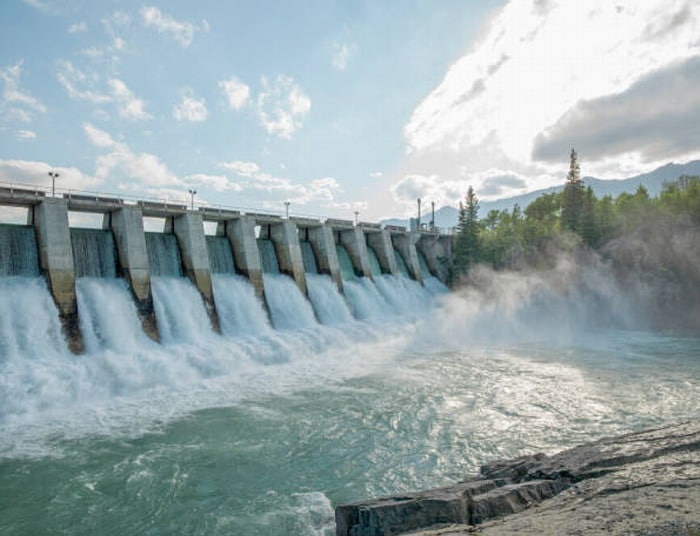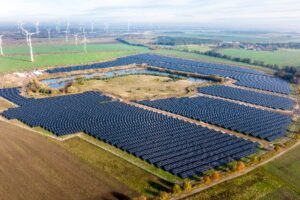Advantages and Disadvantages of Hydroelectric Energy

Hydroelectric energy is a type of renewable energy that harnesses the power of water to generate electricity. It is one of the oldest and most widely used forms of renewable energy, and it accounts for a significant percentage of the world’s electricity production.
Hydroelectric power plants are found all over the world, ranging from small-scale plants that power individual homes to large-scale plants that provide electricity to entire cities. While there are many advantages to hydroelectric energy, there are also some disadvantages to consider.
Advantages of Hydroelectric Energy
1. Renewable and Clean Energy Source
Hydroelectric energy is considered a clean and renewable energy source because it uses the power of water to generate electricity without releasing greenhouse gases or other harmful pollutants in the atmosphere. Water is a renewable resource that is constantly replenished by natural processes such as precipitation, making hydroelectric energy a sustainable and reliable source of electricity.
Additionally, hydroelectric power plants do not require fossil fuels to operate, reducing the dependence on non-renewable sources of energy and helping to mitigate the negative impacts of climate change. Overall, hydroelectric energy is an important part of the transition to a more sustainable and environmentally friendly energy system.
2. Reliable and Consistent Energy Supply
Despite the fact that we are talking about a source of renewable energy, hydroelectric power is a reliable and consistent energy supply because it is not dependent on weather conditions like wind or solar power plants. Hydroelectric power plants can generate electricity continuously, 24 hours a day, 365 days a year, providing a stable source of electricity for homes, businesses, and industries. This is because hydroelectric power plants use the force of water to turn turbines that generate electricity, and water flow can be regulated to maintain a consistent level of power output.
Unlike other renewable energy sources that can be intermittent, hydroelectric energy can provide a dependable source of electricity that is not affected by weather patterns or time of day. Overall, hydroelectric energy is an important source of stable and reliable energy supply in our energy mix
Cost-Effective
Hydroelectric energy is considered a cost-effective energy source because it has a low operating cost once the infrastructure is built. The cost of building a hydroelectric power plant can be high, but once it is constructed, the operating costs are relatively low compared to other forms of energy.
This is because hydroelectric plants do not require fuel like coal, oil, or natural gas to generate electricity, which can be expensive. Additionally, the maintenance costs of hydroelectric power plants are generally low, as the technology is simple and the components have a long lifespan. This means that the cost of producing electricity with hydroelectric energy can be significantly lower in the long run, making it an attractive option for countries and regions looking to invest in renewable energy sources while keeping costs down.
Flood Control and Water Management
Hydroelectric power plants can provide flood control and water management benefits. The water stored in reservoirs can be used to regulate water levels downstream, reducing the risk of flooding during periods of heavy rain or snowmelt. Additionally, hydroelectric power plants can be used to control the flow of water, which can be useful for irrigation, water supply, and other water management purposes.
Disadvantages of Hydroelectric Energy
Environmental Impacts
One of the biggest disadvantages of hydroelectric energy is the environmental impact it can have. The construction of dams and reservoirs, can alter the natural flow of rivers and impact the surrounding ecosystem, and can lead to habitat loss, displacement of wildlife, and changes to the water temperature and quality, which can have negative effects on fish populations and other aquatic life.

Hydroelectric power plants have an impact on the environment, image source: Pixabay
Additionally, the flooding of large areas of land to create reservoirs can result in the release of greenhouse gases from decomposing organic matter, contributing to climate change. However, it’s worth noting that the environmental impact of hydroelectric energy can be reduced through careful planning and management, such as designing dams and reservoirs to minimize disruption to local ecosystems and working to mitigate the effects of climate change on water resources. Overall, while hydroelectric energy is a clean and renewable source of energy, it’s important to consider and address the environmental impact of its implementation.
Limited Suitable Locations
There are several source of clean power that suffer due to limited suitable locations. Hydroelectric energy is one of them because it requires specific geographic conditions to be effective. Hydroelectric power plants require a reliable and consistent flow of water, a significant drop in elevation, and large amounts of water to generate electricity efficiently. Therefore, not every river or body of water is suitable for hydroelectric power generation.
Additionally, the construction of a hydroelectric power plant can have significant environmental and social impacts on the surrounding area, which can make it challenging to find suitable locations. As a result, the potential for hydroelectric energy is limited to specific regions with the necessary geographic and environmental conditions. While hydroelectric energy is a valuable source of renewable energy, it is important to carefully consider the location and potential impacts before constructing a hydroelectric power plant.
Risk of Drought
One of the risks associated with hydroelectric energy (hydropower)is the potential impact of droughts on electricity generation. Hydroelectric power plants rely on a consistent flow of water to generate electricity, and prolonged periods of drought can reduce the availability of water, resulting in reduced electricity production. This can be particularly challenging in regions where hydroelectric energy is a significant source of electricity generation, as droughts can lead to power shortages and increased reliance on other, often more expensive, sources of energy.
Climate change is also expected to increase the frequency and severity of droughts in some regions, further increasing the risk to hydroelectric energy production. To mitigate the impact of droughts on hydroelectric energy, it is important to invest in water management strategies that can help to maintain a reliable flow of water to power plants, as well as diversifying energy sources to reduce reliance on hydroelectric energy during times of drought.
High Upfront Costs
While hydroelectric energy can be cost-effective in the long run, the upfront costs of building a hydroelectric power plant can be high. The cost of building a large dam, for example, can run into billions of dollars, which can make it difficult for some countries or regions to invest in hydroelectric energy.
Conclusion
Hydroelectric energy has many advantages as a renewable and clean energy source that can provide reliable and consistent energy supply. However, it also has some disadvantages, including its environmental impact, limited suitable locations, risk of drought, and high upfront costs. To fully harness the benefits of hydroelectric energy, it is important to carefully consider these advantages and disadvantages and weigh them against other forms of energy.







